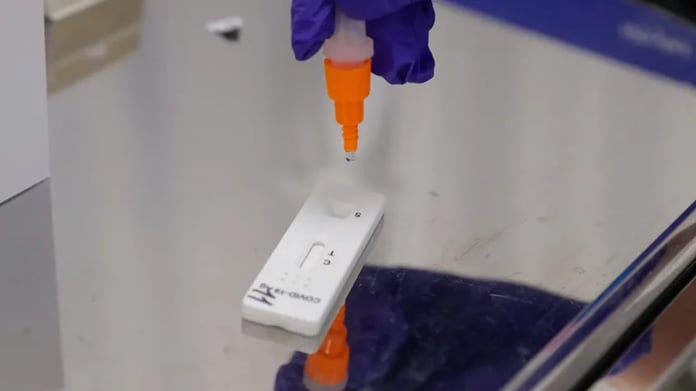The Vector Center has been entrusted with the development of a biosensor and rapid “bedside” pathogen diagnostics, which will detect COVID-19, influenza and other infections. As RTVI found out, the work is included in the state task for 2023. (The document is placed in the state assignment register).
Biosensor
The State Scientific Center of Virology and Biotechnology “Vector” began to develop a biosensor that will detect pathogens of socially important diseases. Work is carried out within the framework of the approved state task. Development of the device is expected to continue until 2025.
The biosensor is supposed to detect coronaviruses, influenza viruses and other socially important pathogens, the state task says. Devices of this type identify pathogens in real time, unlike PCR tests, which take 4 to 6 hours to complete. It’s too long for urgent anti-epidemic measures, noted Earlier, Vector scientists published preliminary development results in the journal Biosensors.
In the articles, Vector employees reported on the results of biosensor testing to identify the pathogen flu And COVID-19 . The sensors are based on a silicon chip with two electrodes, a nanowire or a nanoribbon, on which antibodies are applied.
The principle of operation of the biosensor base when recording electric current flowing in a nanowire or nanoribbon. The virus particles, when they hit the sensor, bind to the antibodies deposited on the surface, which changes the conductivity of the wire or tape.
Preliminary experiments have shown the high sensitivity of the sensor, which detects 10,000 influenza virus particles per millilitre. The pathogen detection time in the experiment is not outmoded five minutes.
The chip tested, according to the authors, may be “a prototype diagnostic device with good prospects for implementation in medical practice.” The authors report that a similar biosensor has been successfully developed by other developers. used to detect avian influenza viruses.
New development protected a patent that Vector received in 2022.
Types of biosensors
Biosensors are distinguished by the biological material used as sensor: enzymes, antibodies, DNA, fluorescent proteins. The resulting biochemical process generates a detectable signal, which can be optical, electrochemical, piezoelectric, thermal, magnetic. Depending on the signal received, there are different types of biosensors.
Express diagnosis “at the bedside”
Vector’s state task for the current year also includes the development of advanced methods for the rapid diagnosis of infections at the bedside.
In the midst of a monkeypox outbreak “Vector” informed on the creation of a test for the detection of the causative agent of smallpox at the “sick bed”. The tests do not require a laboratory. The creators noted the simplicity of the analysis and the possibility of visual accounting of the results.
Invention patented back in 2020. Next, “Vector” requested a “bedside” pathogen detection kit. It is designed to detect highly contagious quarantine infections in specimens and environmental samples. Such a need arises when diagnosing “imported infections” on vehicles arriving from abroad, when identifying people with high body temperature, the patent says.
The method is less sensitive than the PCR test, but it is sufficient to detect pathogens. The lower sensitivity is compensated by the speed of obtaining the results, the simplicity of the analysis and the possibility of a visual evaluation. The rapid immunochemical assay kit detects pathogens in 60 minutes.
The test device is based on antibodies deposited on the surface of the substrate. They are associated with colloidal gold particles with a diameter of 10-20 nm, the system also contains a “developer” based on silver nitrate to enhance the optical signal. In the presence of pathogens, complexes with antibodies are formed, which are manifested by dark spots on the substrate, which can be considered visually.
All biological materials can be used for testing, including sputum, skin and mucous membrane washes, environmental samples, food products, hygiene items, as stated in the patent.
The development is expected to be completed by 2025.
Rospotrebnadzor did not respond to RTVI’s request for further developments.
Other state order developments
In addition, this year Vector will cover pandemic influenza. The task of the state includes the creation of a vaccine and the assessment of the herd immunity of the population against pandemic influenza viruses.
In addition to vaccines, drugs based on interferons and their inducers will be developed for use in ARVI. Among the analogues registered on the Russian market: Kagocel, Amiksin, Cycloferon.


